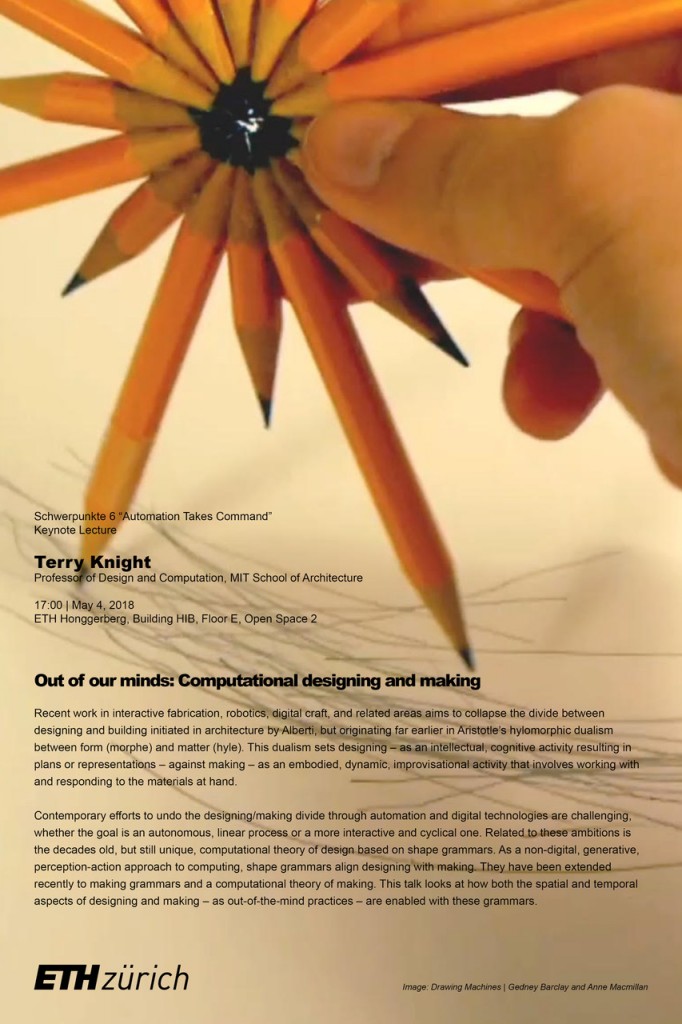Recent work in interactive fabrication, robotics, digital craft, and related areas aims to collapse the divide between designing and building initiated in architecture by Alberti, but originating far earlier in Aristotle’s hylomorphic dualism between form (morphe) and matter (hyle). This dualism sets designing – as an intellectual, cognitive activity resulting in plans or representations – against making – as an embodied, dynamic, improvisational activity that involves working with and responding to the materials at hand.
Contemporary efforts to undo the designing/making divide through automation and digital technologies are challenging, whether the goal is an autonomous, linear process or a more interactive and cyclical one. Related to these ambitions is the decades old, but still unique, computational theory of design based on shape grammars. As a non-digital, generative, perception-action approach to computing, shape grammars align designing with making. They have been extended recently to making grammars and a computational theory of making. This talk looks at how both the spatial and temporal aspects of designing and making – as out-of-the-mind practices – are enabled with these grammars.
